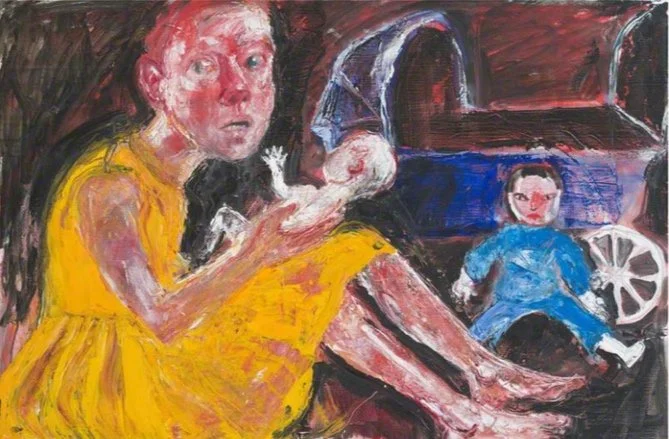Feminism In Art
Art history is a discipline we’ve perceived and perpetuated as a male-dominated realm for hundreds of years. Whether that be in traditional exhibitions, mass media, or textbook pages, the art world is practically bursting at the seams with male representation and adoration, leaving very little room for the notable impact of female art. If you happen to doubt this imbalance, just take a quick moment to look up “famous artists” in your Google search engine. Of the fifty-one name suggestions that will show up as a result of this search, only three of these names will be that of female artists. While three out of fifty-one is a fairly pitiful representation of the phenomenal world of female art, this is not to say that these women do not exist; they are simply not often talked about or highlighted.
In the late 1960’s, a period known as the Feminist Art Movement began to gain traction across the US. In an attempt to combat harmful gender stereotypes, female artists began creating powerful and provocative pieces, effectively increasing the visibility of women in society’s art scene. While the names of these women have yet to fully enter mainstream discourse in the art world, we believe that they deserve to be highlighted right alongside Picasso, Van Gogh, Monet, and all the other male artists that have been celebrated for generations. Here are some feminist artists, both of the past and present day, that we believe are worth knowing, not only for their talent, but for their large role in bringing women’s rights into the spotlight.
Judy Chicago
Judy Chicago is one of the most well known and highly-esteemed feminist artists in history. As a pioneer of the Feminist Art movement from the very beginning, Chicago is known not only for her powerful pieces, but also for beginning the first Feminist Art program at California State University, Fresno. While widely recognized for many of her works openly depicting female sexuality and anatomy, her most famous piece to date is The Dinner Party (1974-79). This installation, currently on display at the Elizabeth A. Sackler Center for Feminist Art at the Brooklyn Museum, is made of a large triangular table with thirty-nine place settings, all labeled with the names of prominent women in history. At each place setting sits a goblet, utensils, and ceramic plate, painted with depictions of flora often used to mimic female genitalia. Through feminine imagery and the large symbolic message of women “having a seat at the table”, this installation effectively heightened Chicago’s fame and created a great deal of discourse around the concept of feminism itself. While The Dinner Party (along with other art products of second wave feminism) has faced criticism for overlooking racial politics, Chicago’s piece remains an important component of both contemporary and feminist art.
Barbra Kruger
Barbra Kruger is a conceptual artist widely regarded for conveying themes of feminism through the combination of photography, and bold, Helvetica text. Her works have been utilized greatly across pop culture today, and even appear to be the inspiration for the artistic stylings of the popular clothing brand Supreme. While Kruger is not technically considered to be a “feminist artist” by all, her influence from the feminist movement is visible in many of her most popular pieces. Through her work, Kruger addresses themes like sexuality, power, submissive femininity, and identity, often using ironic phrases to convey her disappointment in society’s social constructions. Untitled (Your Body is a Battleground) (1989), is one of Kruger’s most well known pieces and is still used to this day
as an important commentary on women’s reproductive rights. This image, along with many others depicting issues with the standards of femininity, has been used across the United States to advocate for women’s rights, appearing on billboards, buses, magazine covers, and buildings.
Shani Rhys James
Shani Rhys James is the only artist on this list that is not technically associated with the Feminist Art Movement of the late 1960s. Part of a slightly younger generation than Judy Chicago and Barbra Kruger, Rhys James is a highly celebrated Welsh artist known for her still lifes and self-portraits portraying subtle feminist undertones and commentaries on societal constructs for women. Many of the women she paints are depicted in a rather bizarre manner, creating an almost unsettling image for viewers who are used to seeing women through the rose colored glasses of unrealistic beauty and perfection. Many of Rhys James' works depict the entrapment of women in domestic life, utilizing symbols like dolls, mirrors, and flowers to challenge traditional femininity. While Rhys James is not as widely recognized as Chicago or Kruger, her work stands on its own in both beauty and technique, depicting a powerful message through feminist art in the modern day.
While this list could go on and on with notable feminist artists, we hope these three have been enough to not only inspire you, but also call attention to the strong female presence in the artworld. These women, like their art, deserve to be celebrated for both their impeccable talent, and extraordinary bravery.
Written by Emma Ehle, Photography: Abbi Roane, Social Media: Ferrell Tugman




